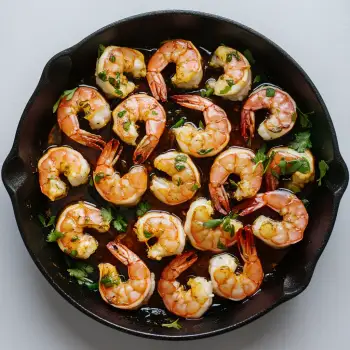
 70 minutes
70 minutesA traditional Burmese noodle soup featuring catfish, a rich broth, and an array of aromatic ingredients and optional toppings.


Catfish, cleaned and scaled
0 lb
cups
Shrimp Paste
teaspoons
teaspoons
Garlic Clove, smashed
each
Ginger, slices
each
Lemongrass, trimmed and smashed
stalks
Minced Shallots
cups
Minced Lemongrass
tablespoons
pinches
teaspoons
tablespoons
Oil
cups
teaspoons
teaspoons
tablespoons
cups
Banana Stem, peeled, soaked in cold water for 1 hour, sliced, and drained
0.25 inches
each
Black Pepper, finely ground
pinches
Fresh Rice Vermicelli
0 lb
Shallot Oil
tablespoons
1. Rinse Fish
Start by rinsing your fish thoroughly. This step ensures that the fish is clean and ready for cooking.
2. Prepare Broth
In a wide pot, bring 4 cups of water to a boil and add 1 teaspoon of shrimp paste, 1 teaspoon of turmeric, 3 smashed garlic cloves, 3 slices of ginger, and 2 stalks of lemongrass. Let this mixture simmer for about 20 minutes.
3. Cook Fish
Add the cleaned fish to the simmering broth and allow it to cook for 20 minutes. After the fish is cooked, remove it from the broth and let it cool. Strain the broth to ensure it is clear, and then flake the fish into small pieces.
4. Extract Flavor from Fish Remnants
Return the fish bones and skin to the pot of broth. Bring it to a boil again, then strain the broth once more after 10 minutes to extract maximum flavor from the fish remnants. Discard the bones and skin afterward.
5. Prepare Aromatic Paste
Prepare your aromatic paste by pounding or processing ½ cup of minced shallots, 1 tablespoon of minced lemongrass, 1-2 teaspoons of minced ginger, and 1 tablespoon of minced garlic with a pinch of salt.
6. Cook Aromatic Paste
Heat ¼ cup of oil in a wok or heavy skillet. Add ¼ teaspoon of turmeric and ½ teaspoon of Red Chile Powder to the hot oil, then toss in your aromatic paste. Cook until the shallots soften and the mixture becomes fragrant, which should take several minutes.
7. Incorporate Fish
Incorporate the flaked fish and 1 tablespoon of fish sauce into the cooked paste. Stir well to blend the flavors, cooking for an additional 3 minutes.
8. Thicken Broth
To thicken the broth, bring it back to a boil and stir in a mixture of ¼ cup toasted chickpea flour or rice powder and 1 cup of water. Continue to boil for about 10 minutes until the broth has thickened nicely.
9. Add Soup Extras
Add the optional banana stem, 10 small shallots, and a sprinkle of finely ground black pepper to the broth. Let everything simmer together for another 10 minutes.
10. Prepare Noodles
While the soup is simmering, prepare the noodles. If using fresh rice noodles, boil them for about 1 minute; if using dried rice noodles, boil them for around 5 minutes. Drain the noodles and toss them with 1-2 tablespoons of shallot oil to prevent sticking.
11. Serve Soup
To serve, place a portion of noodles into each bowl and ladle the hot soup over them. Add your choice of toppings and condiments, such as deep-fried chayote fingers, fish cakes, minced scallion greens, hard-boiled egg wedges, lime wedges, fried shallots, and chopped coriander.
Balance the salty, sour, and spicy components, tasting and adjusting as needed. Use a good-quality fish sauce and remember that flavors will develop over time, so under-seasoning slightly is advisable.
Opt for fresh catfish if possible, as it will have a better texture and flavor than frozen. If you must use frozen, ensure it's thoroughly defrosted and patted dry to remove excess moisture.
Prepare a range of options for people to add to their liking, such as chopped cilantro, slices of hard-boiled egg, crispy fried onions, and wedges of lime.
Toasting the aromatics (lemongrass, ginger, garlic) before making the broth will release their essential oils and add a smoky note to your soup. Simmer the broth gently to allow the flavors to meld without overpowering each other.
Whisk it in carefully to avoid lumps, and cook it long enough to eliminate any raw flour taste. Achieve a smooth consistency that thickens the broth without making it gloopy.




Comments (0)